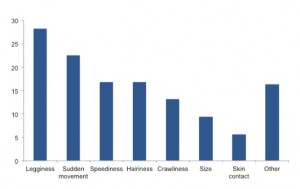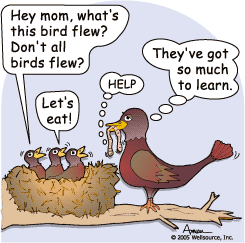Just this week, after an excruciatingly lengthly day I flipped on my TV, little did I know that MTV would pop up. The scene that appeared was laden with f-bombs(bleeped out) and other vulgarities, I changed the channel so fast I can hardly remember what the TV show was and what the individuals were actually doing. What I do remember clearly is how shocked I was after turning on the TV, all I wanted to do was watch the news or maybe a lighthearted movie. This got me thinking, how many times have children been in this same scenario after a parent or older family member didn’t change the channel? Numerous studies have found correlations between aggressive behavior and violence witnessed on the TV screen, so how could a parent not put on parental controls or take measures to avoid their children’s exposure to this material? Well, according to a study released just two days ago in the Pediatrics Journal, parents have become desensitized to what they see on TV.
My initial thought was, of course this had to be the answer to why children come into contact with material meant for adults, but as always further examination was needed before jumping to such conclusions. The study, conducted on 1,000 parents with children 6 to 18, had the participants successively watch various movie scenes that included violence and sex, according to Variety. As the participants watched more and more scenes they became more and more “desensitized.” The results found came about from asking parents how they would rate a movie after each clip,“after the first movie clip, respondents thought the minimum age to see a movie with that kind of violent content should be 16.9 years old on average and 17.2 years old for sexual content. After watching the sixth and final scene, parents grew more lenient, deeming 13.9 years acceptable for violent films and 14 years old for sexual ones.” The results stated above clearly show a disparity in age requirements after successive watching of scenes.
I see the results of this study as very credible, the sample size was large, bias within the study seems non existent, and it was completed in a timetable appropriate for such research. The study itself claims none of the authors had potential conflicts of interest or financial stake within the study. It is also imperative to note reverse causation can be ruled out, there is a clear cause and effect, not a correlation in the study. Due to chance I can’t definitively say that parents desensitization contributes to children’s access to disturbing material, but it surely looks like a possibility.
Sources:
http://www.apa.org/pi/prevent-violence/resources/tv-violence.aspx
https://www.apa.org/pi/prevent-violence/resources/violence-youth.pdf
http://insidemovies.ew.com/2014/10/20/study-parents-are-desensitized-to-sex-and-violence-in-film/
http://pediatrics.aappublications.org/content/early/2014/10/15/peds.2014-2803.full.pdf+html







 There are a lot of myths involving playing music while working. Some say it helps, others say its hurts, while still others think that classical music helps developing brains. For a kid in college, what is the best way to go about listening to music while doing work?
There are a lot of myths involving playing music while working. Some say it helps, others say its hurts, while still others think that classical music helps developing brains. For a kid in college, what is the best way to go about listening to music while doing work?

 , and the fourth was leaving the sidewalk and looking directly at the squirrel. Every time Bateman approached the squirrel he kept a slow walking pace and to measure how close he got he would drop colored pen lids. When he was done, he could measure the path the caps marked. He also had a timer running to see how long it would take before the squirrel ran.
, and the fourth was leaving the sidewalk and looking directly at the squirrel. Every time Bateman approached the squirrel he kept a slow walking pace and to measure how close he got he would drop colored pen lids. When he was done, he could measure the path the caps marked. He also had a timer running to see how long it would take before the squirrel ran. ere conclusive and appear to be pretty accurate to what I witness on a daily basis, there are multiple problems with his tests. The first is he only tested in on squirrels in Manhattan and only on the gray squirrel. Another problem is the issue of a confounding variable. The squirrels could have been running away because of Bateman dropping the caps and creating an unusual noise. Which also leads to the issue of the caps bouncing around when dropped which could create a problem with the measurements. Overall, Bateman’s tests were conducted poorly, despite his positive results.
ere conclusive and appear to be pretty accurate to what I witness on a daily basis, there are multiple problems with his tests. The first is he only tested in on squirrels in Manhattan and only on the gray squirrel. Another problem is the issue of a confounding variable. The squirrels could have been running away because of Bateman dropping the caps and creating an unusual noise. Which also leads to the issue of the caps bouncing around when dropped which could create a problem with the measurements. Overall, Bateman’s tests were conducted poorly, despite his positive results.

















 or those of you who are not familiar with the movie, She’s out of My League, staring Jay Bruchel and Alice Eve, it follows the life of an average man as he sets out to win the love of a gorgeous girl named Molly. Kirk, played by Jay Bruchel, struggles with a lack of confidence. Despite the fact that Kirk and Molly, played by Alice Eve, appear to share a mutual attraction for each other, he struggles with his “number”. The movie revolves around Kirks inability to see himself as the right person for Molly, considering his inferior looks. When discussing his relationship with Molly, Kirks friend, Stainer, explains to him that as a “five”, Kirk cannot have a relationship with Molly, “this Molly is a hard ten. And that five point disparity, that’s a chasm. Chasm? Chasm. You can’t jump more than two point”.
or those of you who are not familiar with the movie, She’s out of My League, staring Jay Bruchel and Alice Eve, it follows the life of an average man as he sets out to win the love of a gorgeous girl named Molly. Kirk, played by Jay Bruchel, struggles with a lack of confidence. Despite the fact that Kirk and Molly, played by Alice Eve, appear to share a mutual attraction for each other, he struggles with his “number”. The movie revolves around Kirks inability to see himself as the right person for Molly, considering his inferior looks. When discussing his relationship with Molly, Kirks friend, Stainer, explains to him that as a “five”, Kirk cannot have a relationship with Molly, “this Molly is a hard ten. And that five point disparity, that’s a chasm. Chasm? Chasm. You can’t jump more than two point”.
